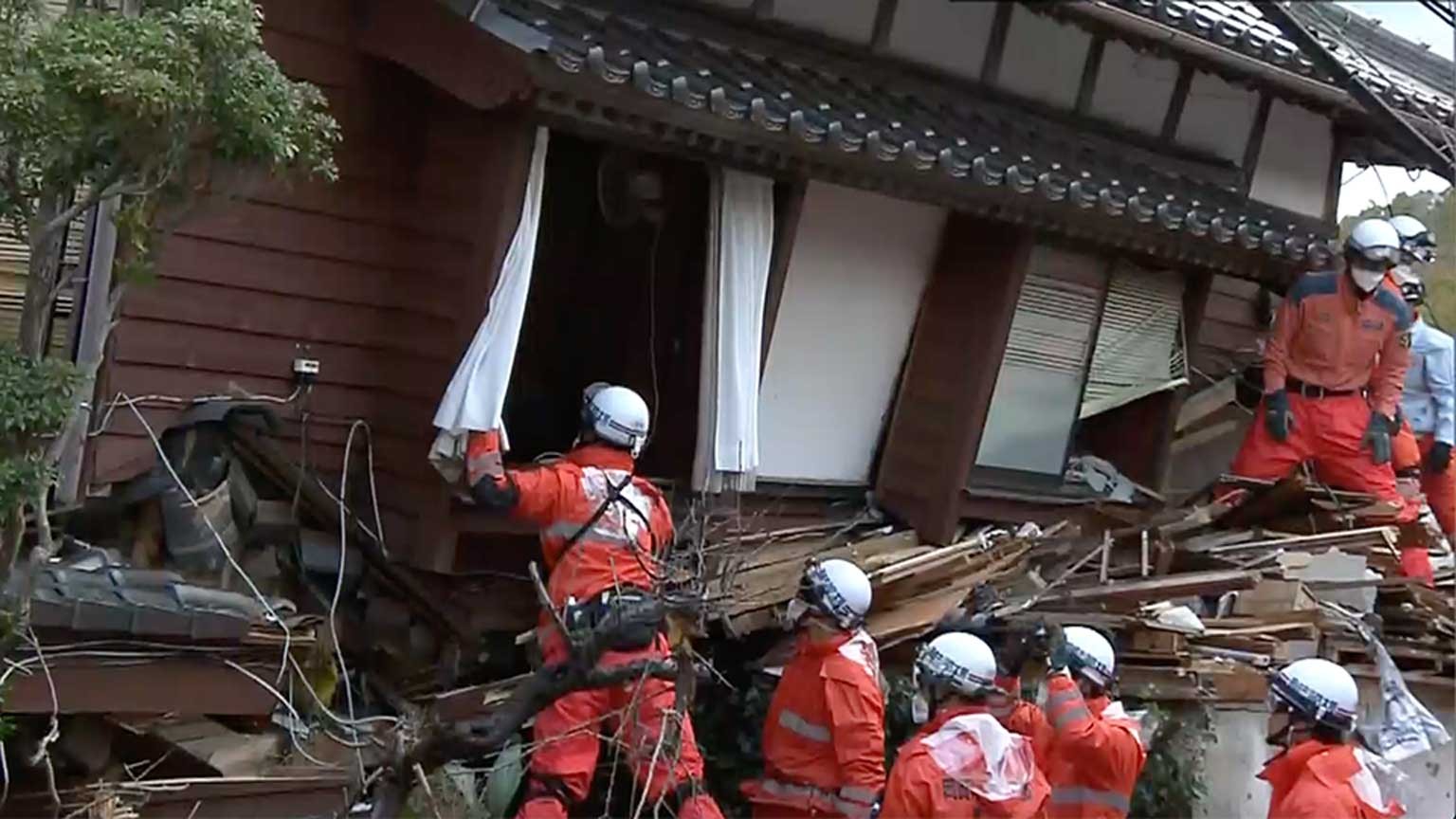Severed roads
Multiple roads remain blocked on the Noto Peninsula, central Japan, due to cave-ins, landslides and other damage caused by Monday's massive quake.
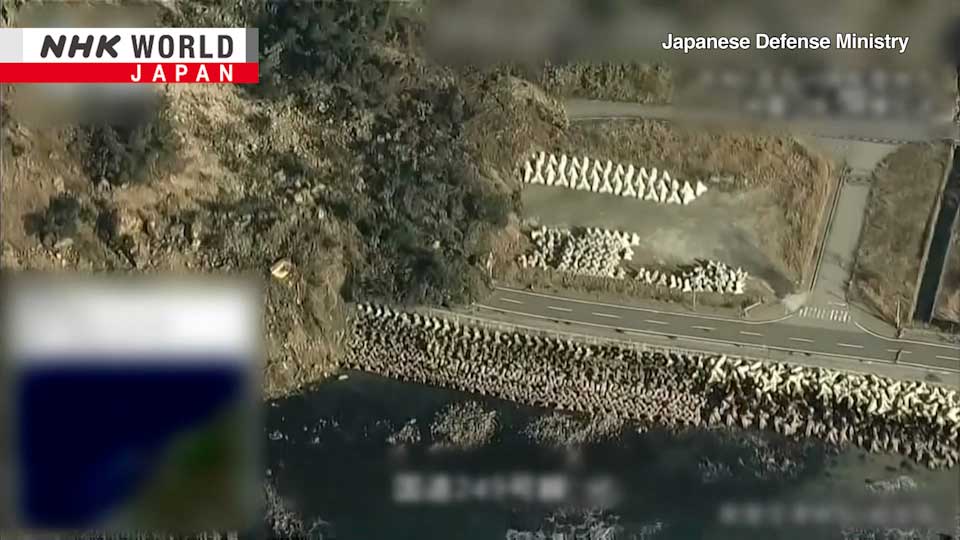
Some roads have been restored, but repair work is ongoing on National Route 249, which runs along the northern coast of the peninsula. This major route suffered extensive damage, with tunnel entrances and slopes having collapsed.
The devastation has isolated some communities in municipalities along the route.
Coast Guard officials are using the ports of Wajima and Nanao as bases for relief operations. But their efforts have been hampered as damaged quay walls are blocking trucks from accessing the port facilities.
Hokuriku Electric Power Transmission & Distribution Company says about 27,200 households in the Noto region remained without power as of 11 a.m. on Friday.
Tourists stranded
Aerial view of Senmaida Pocket Park on Thursday
About 60 people have been stuck at Senmaida Pocket Park, a roadside facility in Wajima City.
Most of them are tourists, including some foreigners, according to one woman at the site.
Amid the shortage of supplies, they are eating the food from the facility and even picking up shellfish from the seashore. The stranded people are sleeping in the buildings or in their cars.
She said it is becoming difficult to beat the cold as there is no power and little gas left in their cars. "We want water, food and fuel. Please deliver it as soon as possible," she added.
One man's mission
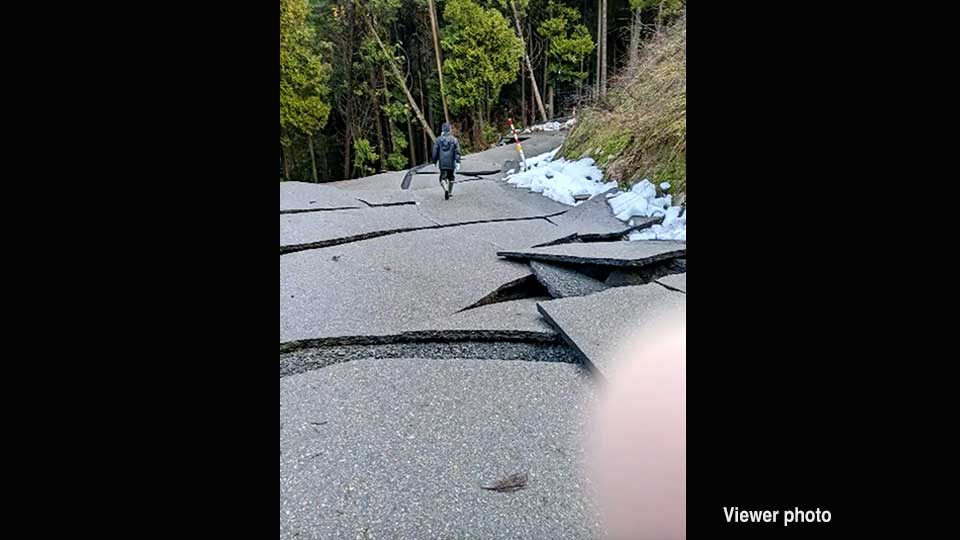
One man from Tokyo, whose parents live in Wajima City, said he was unable to contact them after the quake. He tried to drive to the area on Thursday to check on their safety.
As the road leading to Takimatamachi in the city was cut by a landslide, he was forced to leave his car and walk for an hour and a half through the mountains.
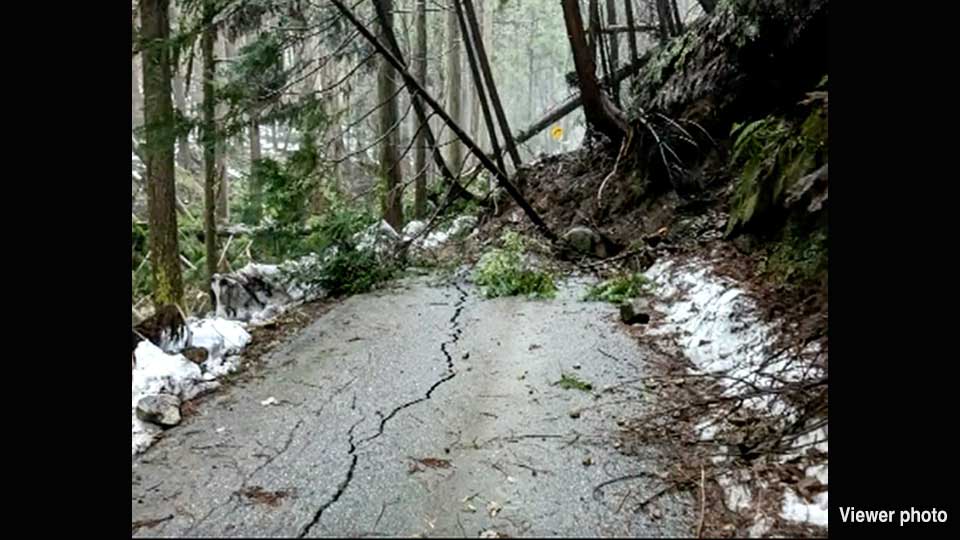
He was finally able to meet his parents, but many of the houses in their community were severely damaged, forcing some residents to take refuge in those buildings left intact.
Electricity and water are still unavailable, and mobile phones cannot be used.
He expressed his relief but said the community needs food, water and sanitary goods. He added, "I hope relief supplies will arrive soon."
SDF personnel checking conditions
In Suzu City, Self-Defense Force members walk to isolated areas to ascertain conditions on Friday.
On Prefectural Route 52, which runs north to south through the city, fallen trees have completely blocked the Higashiyamanakamachi to Oritomachi section.
Self-Defense Force personnel hiked to Oritomachi and confirmed that about 150 people are staying at two evacuation centers.
Relief supplies have yet to arrive so residents are using food from their homes to run a soup kitchen. They also brought fuel for heaters.
One SDF member said the residents look tired, and he wants to take action given the current situation.
NHK World crew in Suzu City
An NHK World crew has been reporting from Ishikawa Prefecture since day one.
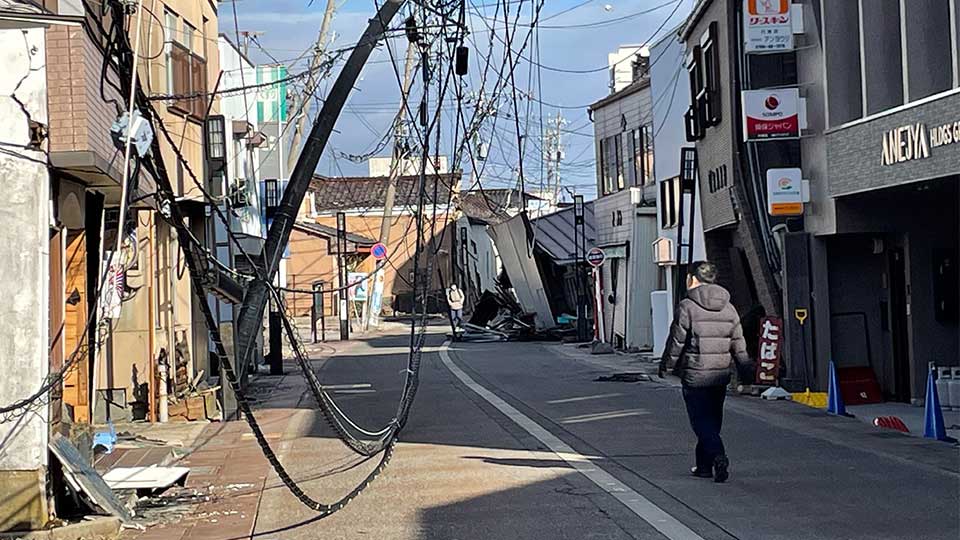
The coastal areas of Suzu City suffered damage from the quake and the subsequent tsunami. Many houses are near collapse and people have taken refuge in evacuation centers.
On Friday, the crew witnessed residents patrolling their homes during the day. They say they're afraid of looting as the damaged buildings are easily accessible.
